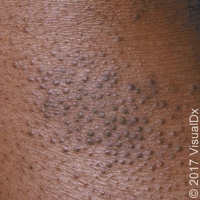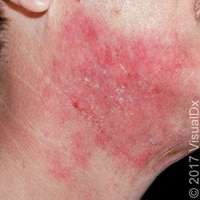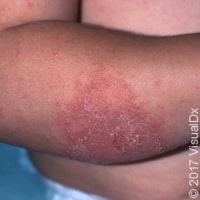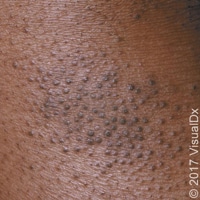Part 3 | Skin Disease Variation
Self-paced online dermatology course
Some diagnoses can have multiple different features. Common diseases can be difficult for the novice diagnostician when they appear in an unusual location or have a different shape than what is typically found.
Lesson 5
Learn the reasons for disease variation, and you will be a better diagnostician.
There are many additional clues that can be leveraged to help your diagnostic process. The term rash, in itself, usually implies an abrupt onset, so it is rare for a patient with a slow-growing tumor or a seborrheic keratosis to call such lesions a rash. It might be called a bump or blemish or spot or growth or mole or lesion. (Patients will hardly ever use the word tumor.) In the case of acute rashes, the history is often critical. Did the patient start taking a new drug? Did the patient have a tick bite? Eat a lobster?
Historical features of importance include the age of the patient, the speed or timing in which the rash occurred, the presence of symptoms such as itch (pruritus) or tenderness, as well as other symptoms such as muscle aches or joint pain. A rash with a fever can be a medical emergency, and patients with fever and a rash should be evaluated immediately.
Continue to Part 4: Differential Diagnosis of an Unusual Rash →
Published on 10/27/2016 | Last updated on 06/23/2017



